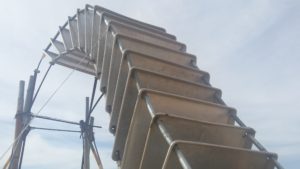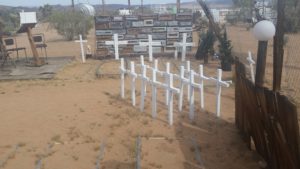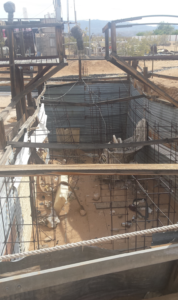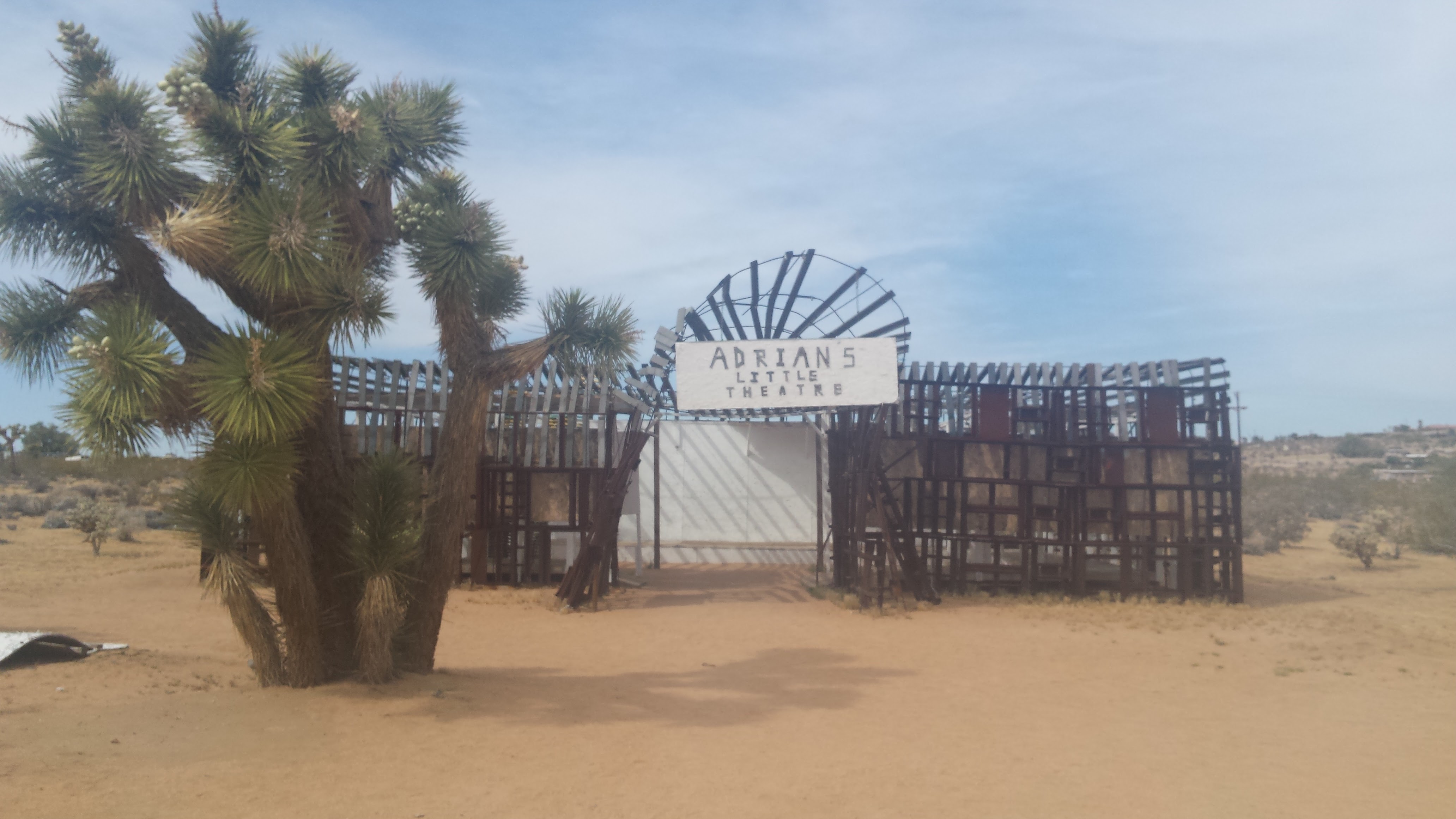Noah Purifoy Outdoor Desert Art Museum
Joshua Tree, California
April 5, 2016
I first saw an exhibition of Noah Purifoy’s work at the Los Angeles County Museum of Art’s Junk Dada exhibit in 2015. There, I discovered that an outdoor museum existed featuring more of Purifoy’s artwork, so I added it to my list. I finally created an opportunity to go to the relatively remote location of the museum in April with a friend.
After seeing the Junk Dada exhibit, I didn’t know exactly what to expect from the outdoor museum. I’ve mentioned before my lack of confidence with visual art. Thus, walking onto the campus of this 10-acre museum was intimidating. Fortunately, I was quickly able to recognize the sheer beauty of the diverse array of manipulated found objects against the clear blue desert sky and the contrast between the mostly metal and plastic discarded man made items and the desert sand, shrubs, and Joshua Trees.
 Unlike traditional museums, which are built to preserve and protect their contents, the works of art in Purifoy’s outdoor museum are designed to interact with the elements and break down accordingly, perhaps reminding visitors of our insignificant role in the earth’s grand cycles. Stacks of familiar, factory-made items, are, in the long run, no match for desert wind and heat. In the short run, however, visitors can still see how Purifoy intertwined metal wires and cables with wooden stakes cassette players, metal folding chairs, motherboards, monitors, keyboards, and skis to explore the relationships between art and nature, man and machine. He sorted, hung, stacked,and joined mirrors, pipes, windows, tiles, mannequins, cement blocks, hubcaps, doors, fences, toilet seats, boots, trays, paint cans, tires, televisions, and bowling balls. At this museum, the pieces are not labeled with title cards. Visitors are left to make up our own titles.
Unlike traditional museums, which are built to preserve and protect their contents, the works of art in Purifoy’s outdoor museum are designed to interact with the elements and break down accordingly, perhaps reminding visitors of our insignificant role in the earth’s grand cycles. Stacks of familiar, factory-made items, are, in the long run, no match for desert wind and heat. In the short run, however, visitors can still see how Purifoy intertwined metal wires and cables with wooden stakes cassette players, metal folding chairs, motherboards, monitors, keyboards, and skis to explore the relationships between art and nature, man and machine. He sorted, hung, stacked,and joined mirrors, pipes, windows, tiles, mannequins, cement blocks, hubcaps, doors, fences, toilet seats, boots, trays, paint cans, tires, televisions, and bowling balls. At this museum, the pieces are not labeled with title cards. Visitors are left to make up our own titles.
 One work that stood out was the fenced-in cemetery, each “grave” marked with a white cross or a transparent headstone.Then, there were the stacks of green and yellow lunch trays inside of Adrian’s Little Theater as well as the giant wave of metal trays. Purifoy even pays homage to Jim Crow inequities with a water fountain piece demonstrating his creative use of seemingly innocuous objects. Against a light colored wall is a familiar greenish, rectangular metal water fountain below a sign that reads“WHITE” next to a second water fountain made from a toilet below a sign that reads “COLORED”.
One work that stood out was the fenced-in cemetery, each “grave” marked with a white cross or a transparent headstone.Then, there were the stacks of green and yellow lunch trays inside of Adrian’s Little Theater as well as the giant wave of metal trays. Purifoy even pays homage to Jim Crow inequities with a water fountain piece demonstrating his creative use of seemingly innocuous objects. Against a light colored wall is a familiar greenish, rectangular metal water fountain below a sign that reads“WHITE” next to a second water fountain made from a toilet below a sign that reads “COLORED”.
![]()
 Purifoy includes several structures in the museum, including one constructed within a giant room-sized hole lined with corrugated iron, a few wooden beams laid over, and an unfinished bridge mounted atop. Looking down into the hole gave my legs a little quiver. This type of potential hazard left us wondering about the liability associated with the museum and the maintenance of the museum, which I now know is the responsibility of the Noah Purifoy Foundation. Even with that information, I am left with more questions about the museum: What type of maintenance does the foundation conduct? How do the foundation administrators determine what maintenance is appropriate and necessary? Who conducts the maintenance? Contractors? Artists?
Purifoy includes several structures in the museum, including one constructed within a giant room-sized hole lined with corrugated iron, a few wooden beams laid over, and an unfinished bridge mounted atop. Looking down into the hole gave my legs a little quiver. This type of potential hazard left us wondering about the liability associated with the museum and the maintenance of the museum, which I now know is the responsibility of the Noah Purifoy Foundation. Even with that information, I am left with more questions about the museum: What type of maintenance does the foundation conduct? How do the foundation administrators determine what maintenance is appropriate and necessary? Who conducts the maintenance? Contractors? Artists?
Of course, visiting a museum should always evoke more questions, so I’m happy to continue to wonder and eager to learn. I also hope to visit more outdoor museums, which might shed more light on how some of these challenges can be addressed.
Check back to read my next post about my experience at the Association for African-American Museums 2016 Conference in Riverside, California.
